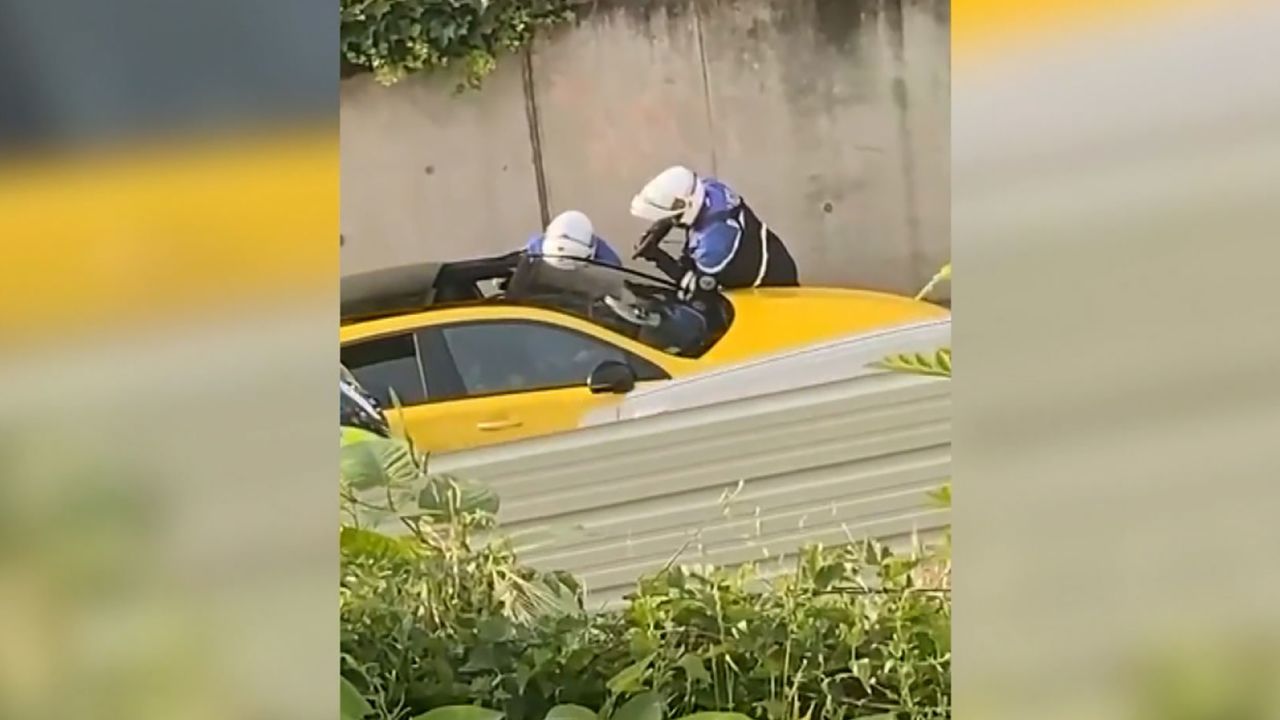Paris is Burning
"[We urge French authorities to] ensure use of force by police to address violent elements in demonstrations always respects the principles of legality, necessity, proportionality, non-discrimination, precaution and accountability."Spokesperson, UN High Commissioner for Human Rights"France, and its police forces, fight with determination against racism and all forms of discrimination.""There can be no doubt about this commitment.""The use of force by the national police and gendarmerie is governed by the principles of absolute necessity and proportionality, strictly framed and controlled."French Ministry of Foreign Affairs
 |
| Protesters clash with riot police in Marseille, southern France, on Friday. (Christophe Simon/AFP/Getty Images) |
"What they are trying to do is seize this moment as an opportunity to open a wider debate about what they see as systemic police abuse, particularly in the working-class suburbs.""There's long been complaints of police brutality and discrimination in these areas, especially against lower-income households and racial minorities.""Last year, there were 13 people killed after being stopped for traffic violations."Reporter Rebecca Rosman, Paris
Three nights of urban violence have rocked the French government following the shooting by police of a 17-year-old teen driving a flashy Mercedes with a Polish license plate. Two motorcycle police attempted to stop the young driver because, they explained later, he had been seen by them to drive into a crosswalk endangering a pedestrian and a bicyclist. He sped away from them, but was soon caught up in traffic and was unable to move. And that is when the police drove up alongside him, ordering him to exit the vehicle and he refused.
The two officers claimed the reason they both took out their guns was for the distinct purpose to “dissuade him from restarting (the vehicle) by asking him to turn off the ignition”. In the event, matters swiftly got out of hand, the driver's recalcitrance spurred the police to action deserving of a war scene. A video a witness had taken picked up the voice of one person threatening to shoot the teen, and another responding: "shoot him!" If the purpose was to teach him a lesson it was lost, since a bullet stopped his heart.
That event set off a tsunami of outrage resulting in a spontaneous outpouring of public grief and anger, and the subsequent protests that were anything but peaceful. Tens of thousands of police have been unsuccessful in their attempts to make a dent in the public resolve to vent their smouldering rage at the police, accusing them of sustained violence against minorities. The teen in question, Nahel, was of Algerian parentage. Spurring young people primarily from public housing projects called banlieues -- considered disadvantaged and violent neighbourhoods -- to come out in droves.
 |
| Protesters gather at the Lyon Terreaux square in Lyon, southeastern France, on Friday. (Jeff Pachoud/AFP/Getty Images) |
Appeals for calm have only resulted in accusations and more rioting. Warnings that the violence that has injured dozens of police, damaging hundreds of public buildings would not be allowed to go on without repercussions have had little effect. Across France more riots have erupted, with looting and torching of cars and buildings. The destruction has in fact, destroyed the very places where the rioters live. "The professionals of disorder must go home", announced Interior Minister Gerald Darmanin, who advised that up to 45,000 police would be deployed to put down the riots.
France is no stranger to riots and violent protests. This one, anticipating a fourth night of violence, may yet result in the government calling an emergency and resorting to stronger measures to attempt to restore the peace. The police officer who shot the teen has been arrested and charged with manslaughter; 'voluntary homicide'. The public prosecutor in Nanterre, where the shooting took place, stated he was led to conclude "the conditions for the legal use of the weapon were not met", through his initial investigation.
When dusk falls, protesters shoot fireworks, hurl rocks at police, who return fire with repeated volleys of tear gas. Police and firefighters struggle to contain protesters and to extinguish the blazes. Public buildings, from schools to police stations, town halls and other infrastructure of civilized life have been damaged, from Toulouse in the south, to Lille in the north. Most of the damage has taken place in the suburbs of Paris.
Vandalized public buildings have taken the fury of the people who live in the banlieues who from time to time emerge to set fire to parked vehicles on roadways as an expression of their discontent. Their lives are often circumscribed by the area in which they live, so crime-ridden and hostile to the presence of non-residents that police and fire fighters dare not enter to restore order or extinguish blazes.
The French government's more recent investment in upgraded public transit to service the banlieues, in encouraging higher education for young banlieue residents in response to claims of neglect and high unemployment among the ethnic minorities seems yet to bear fruit.
 |
| This screengrab from video posted on Twitter shows the moment when police interacted with a 17-year-old teen during a traffic stop in a Paris suburb. |
Labels: Police Shooting of Teen Driver, Protests Across France, Riots in Paris

0 Comments:
Post a Comment
<< Home